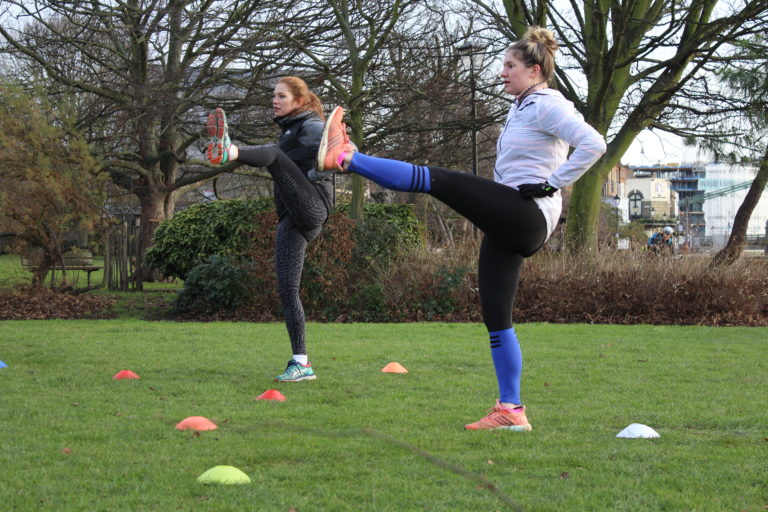In the first article of this series Diverse London – Research for a Diverse City, I explored diversity in London and set the rationale for undertaking in-depth research into minority populations and other distinct population groups.
The overwhelming evidence points only in one direction: physical activity and sport has a fundamental role to play in tackling societal issues, facilitating social integration and encouraging social mobility.
The question now is how do we best collect the evidence required to implement effective and appropriate opportunities, offers and programmes for a selected target group?
To help answer this question, I’ll look at some factors around research design and delivery that need to be considered to ensure findings are valid, unbiased and, most importantly, actionable within a given context.
These approaches have been developed as part of a number of insight and research briefs conducted by London Sport in recent months.
Research Design
There are many factors to consider when commencing a research project designed to reach and engage with a selected population group or audience.
First and foremost, it is worth recognising that in the context of physical activity and sport, these distinct (sometimes referred to as hard-to-reach) groups are made up of populations who traditionally engage less, or not at all, with local physical activity, sport, health or other community offers.
These groups are often at increased risk of social exclusion and the knock-on effects of being isolated from the rest of the population, which can include poor physical and mental health, lack of opportunities for social mobility and decreased individual and/or community development.
They can vary substantially (including at an inter-group level) and often individuals or communities can face multiple challenges. While the factors mentioned below do not automatically mean an individual is harder to reach, some examples might include:
- Low income families and those facing economic disadvantage
- Minority ethnic communities
- Elderly people
- Individuals who don’t speak English well or at all (4.2% of London’s population)
- Individuals with single or multiple impairments, long-term illnesses, or mental health needs
- Youth offenders
- Those suffering from drug or alcohol addiction
Methodology
Where lack of engagement and opportunity exists within a community, planned and well-delivered research can generate the rich, in-depth understanding required to evidence need.
While time and budget restrictions can limit methodological choice when undertaking research in this context, it is advisable to use methods that allow you to engage with and listen to what individuals and communities are saying. Qualitative techniques such as interviews, focus groups and direct consultations often achieve this aim by allowing you to explore below the surface of existing perceptions to understand the unique strengths of these distinct groups.
Furthermore, getting out and about in the community to speak to leaders, activists and ordinary residents will allow you to explore and reveal unidentified existing assets within the community that can be mobilised to support sustainable community-driven development. This approach is known as Asset Based Community Development (ABCD) and has been implemented successfully to improve community experiences in physical activity and sport.
London Sport’s Relationship Manager, Emily Neilan, has written a more extensive article outlining the benefits of this approach here.
The decision on which qualitative method(s) to use is often dictated by the availability of resources and budget, and by time restrictions.
Local authorities are being asked to do more for their communities with less funding, fewer members of staff, and less time. While that may initially seem likely to create challenges in research design, it actually means that developing creative research design solutions is crucial in order to generate valid and effective physical activity and sport offers for those communities most in need.
“Have no fear of perfection, you’ll never reach it.” (Salvador Dali)
Online qualitative and co-design research is emerging as an innovative solution to engage hard-to-reach groups, such as young people, minority ethnic groups (higher proportion of online use than average), low income groups, and non-English speakers (online research can be more easily conducted in multiple languages).
This method involves the development of a highly accessible, but also private and secure, online environment for selected stakeholders to share their thoughts and discuss topics based on guided questions and prompts.
Conducting research in this manner allows wider reach and representation without the intrusion (or, indeed, manpower cost) of a physical presence, while also eliminating structural costs linked to venue hire, transcription, transport, printing.
Ultimately, it can result in a substantially more cost-effective solution for projects where co-development and/or community consultation are key elements of the research design.
Sampling and recruitment:
Understanding how big a target population group is in a specific area will allow you to develop a sample size range to then collect valid data and develop robust findings that can be applied accurately as a measure for the whole sample group.
But, how do you engage with your identified groups? This is a challenge when recognising that, frequently, neither researcher nor research commissioner are themselves reflective of the distinct groups being focused on.
Digital and Data Tools
Sometimes, the most difficult part of a research brief is understanding the size of your target market and where and how to find them.
There are some great tools available freely to our sector. The GLA DataStore catalogues and presents up-to-date modelled data on multiple population groups and their locations across London.
London Sport also has our own version (London Sport Insight Portal) designed to support the physical activity and sport sector in particular.
Additionally, the Consumer Data Research Centre provides excellent data maps, visualisations and summaries at a very local level.
Snowball Sampling
A little exploratory research across the data held on these sites can really help focus sampling methods and direct recruitment efforts.
Following on from target market identification, a great way to recruit your groups as participants is by using a snowball sampling method whereby you rely on word-of-mouth to build a participant base in line with your sample range.
Using our own reach, alongside that of our partner network, we tend to find that we get access to the right community representatives who can facilitate introductions and directly engage suitable research participants on our behalf.
A Multi-Strand Approach
Often, social media and other communication methods are also required to enhance reach and ensure you reach the representative level of take-up.
If appropriate, participant incentives can also be used to attract participants who are willing to contribute effectively to the research and often, the cost of incentives is worth it to guarantee successful outcomes.
Specialist recruitment agencies and research panels can also provide access to participants where incentivisation is an option.
Creating Safe Spaces
Most importantly, once recruited and engaged, participants will only share information and content that is useful and actionable if they are doing so in a comfortable and safe environment.
As such, questions and prompts must be delivered within the accepted social and cultural norms of the group involved.
Inclusive access, sign language interpreters, translators and environment set-up should all be part of design consideration, while research leads should be selected as impartial and un-biased facilitators to listen to the voices of the distinct under-represented groups.
In the next article, I will outline ten practical lessons we’ve learnt about carrying out research with hard-to-reach groups, and we will look to engage experts across the sector to discuss these in more detail through a follow-up linked webinar.
To learn more about undertaking research with diverse or hard-to-reach groups or if you are interested in finding out more about London Sport’s work in this area, email Tristan.





